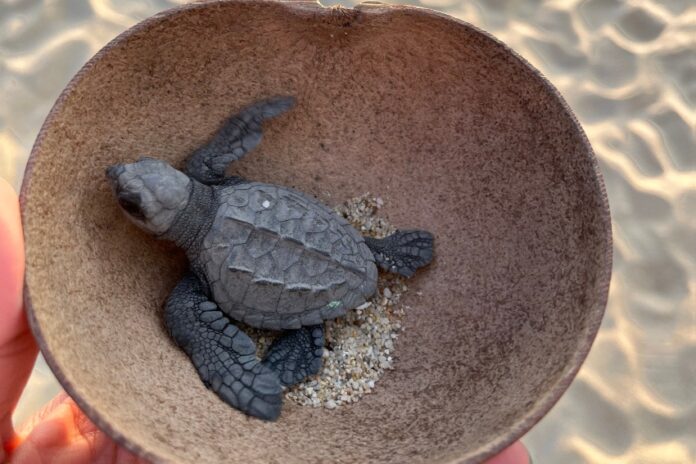As one of the world’s few megadiverse countries, Mexico is home to an estimated 10 to 12% of life on Earth. It’s a land of incredible natural superlatives. For example, the country ranks first in the world for reptile diversity, second for mammals, and fourth for plant life. A huge percentage of its reptiles and amphibians are also endemic, meaning they can be found nowhere else on Earth. Because of Mexico’s profound biodiversity, its wildlife may be its most magnificent treasure.
As a travel writer who’s been to 150 countries, I’ve been fortunate enough to have had many epic wildlife encounters all over the globe. But Mexico truly stands out for its sheer amount of wildlife, from humpback whales in the waters off Baja California to the coatís and jaguars in the jungles of the Yucatán and millions of migrating monarch butterflies in the highlands of Michoacán.
For our final journey in the Where to Travel in Mexico in 2025 series, we’re inviting you to be a quiet, respectful guest in some of the country’s most dynamic ecosystems. These are places that will recalibrate your sense of scale and your place within the grand, wild scheme of things. So grab your binoculars and a sense of adventure and prepare to get up close and personal with some of the most treasured animals on the planet.
Baja California Sur: For underwater encounters
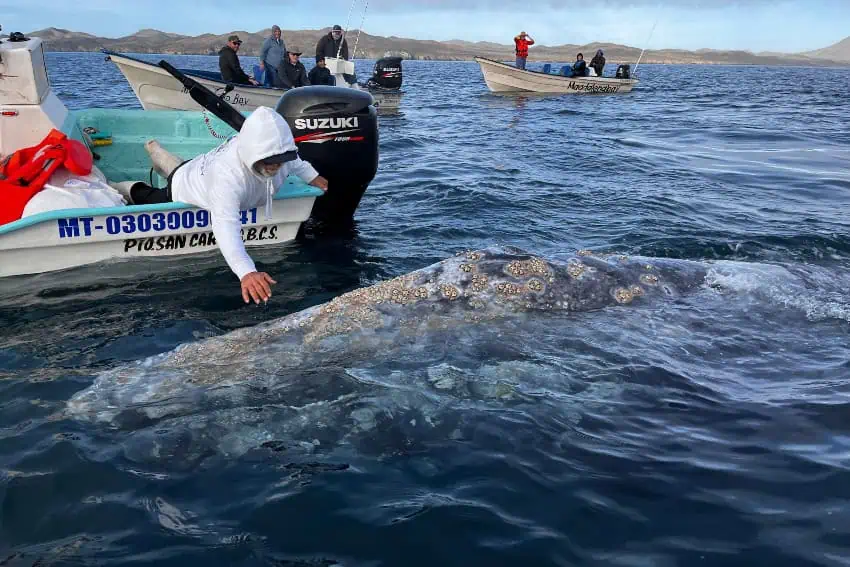
Few places on Earth can rival the sheer marine biodiversity of Baja California Sur, where the legendary Gulf of California (always referred to a the Sea of Cortés locally) truly lives up to its nickname as the world’s aquarium, a moniker bestowed by the late Jacques Cousteau. Its protected, warm-water lagoons, particularly Magdalena Bay, shelter gray whales and their babies during their epic 10,000-kilometer migration from the Arctic.
Many of these whales seek out human interaction, a profoundly moving experience that feels both ancient and deeply personal. I will never forget the moment a 12-meter, 30-ton gray whale calf deliberately approached our small panga, rising so close we could see the individual barnacles and touch its soft and rubbery skin.
Nearby, the waters of La Paz offer the chance to swim alongside whale sharks, the largest fish in the sea. This encounter is one of unhurried grace, as you glide alongside these gentle giants, their vast, polka-dotted backs filtering the dappled sunlight just beneath the surface. A short boat trip away, the island of Espíritu Santo is home to a large colony of sea lions. Slipping into the water here is to be greeted by the ocean’s acrobatic, whiskered clowns. Pups, full of boundless energy, will zip past your mask, barrel-rolling and playfully nibbling at your fins.
Close to the tourist hub of Los Cabos, the waters of Cabo Pulmo also offer intimate marine encounters. Once a decimated reef, this community-led marine park has seen its fish biomass rebound by an astounding 460%. Playful sea lions, sea turtles, and even bull sharks now patrol the waters, offering once-in-a-lifetime experiences for scuba divers.
Calakmul Biosphere Reserve: For jungle wildlife sightings
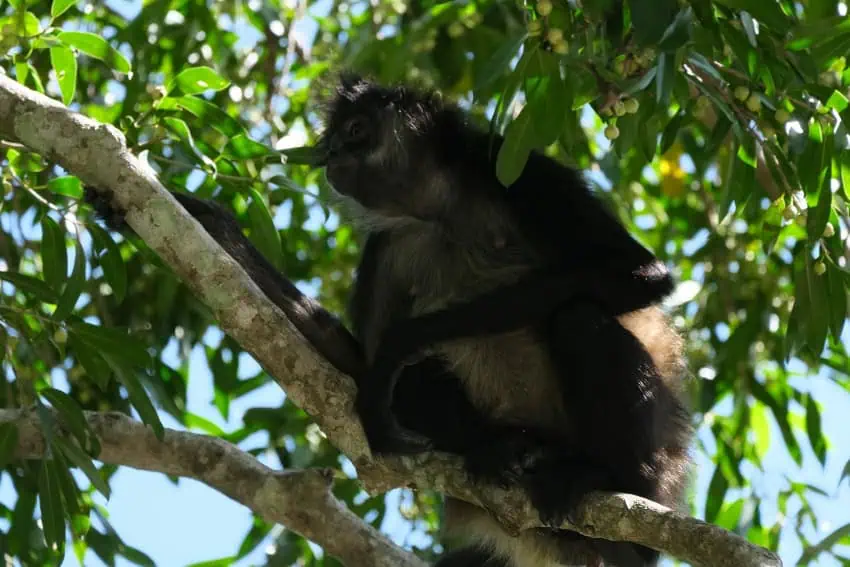
Deep in the remote interior of the Yucatán Peninsula lies the Calakmul Biosphere Reserve, a vast expanse of wilderness where ancient history and wildlife are inextricably linked. Here, towering Mayan pyramids, remnants of a powerful kingdom that once rivaled Tikal in Guatemala, pierce through the seemingly endless jungle canopy.
This 1.8-million-acre reserve is a stronghold for Mesoamerica’s five great cat species — jaguar, puma, ocelot, margay, and jaguarundi. Calakmul itself is home to the largest number of jaguars in all of Mexico. While spotting a jaguar is exceptionally rare, simply knowing you walk through their kingdom adds a thrilling edge to exploring the ruins. Visitors are almost guaranteed to see vibrantly colored ocellated turkeys, inquisitive coatís, and a fraction of the region’s nearly 400 bird species.
My advice is to arrive early and make the drive slowly into the archaeological site, which takes about 90 minutes on a winding, potholed road. Watch out for wildlife crossing on your way! Before the heat of the day hits, make sure to climb Structure II, one of the tallest Mayan pyramids. From that vantage point, I’ve sat and watched a troop of spider monkeys swing effortlessly through the treetops.
Monarch Butterfly Biosphere Reserve: For the annual migration
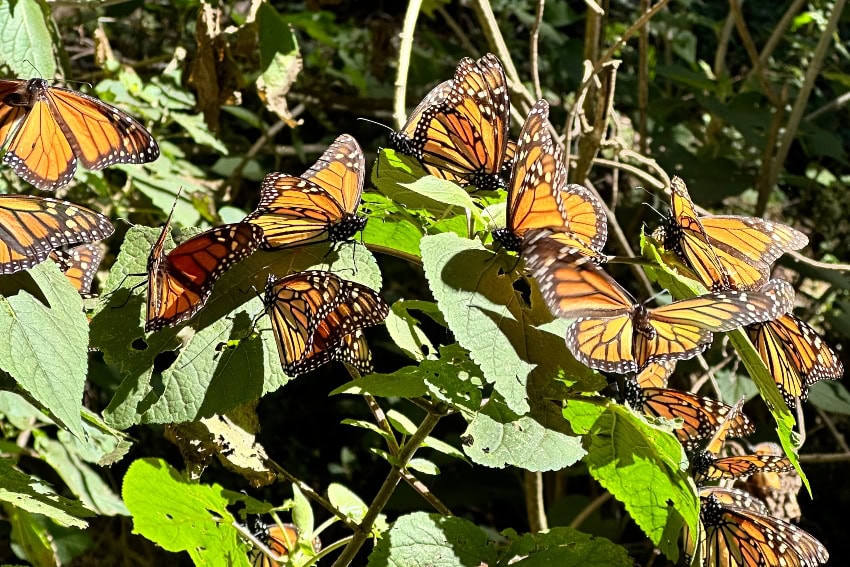
High in the oyamel fir forests of Michoacán, one of nature’s most awe-inspiring spectacles unfolds each winter. An estimated 60 million to one billion monarch butterflies arrive after a multi-generational, 4,500-kilometer journey from Canada and the U.S., seeking refuge.
When I visited the Sierra Chincua sanctuary, the sheer biomass of life was staggering. The branches of the sacred firs drooped under the collective weight of millions of butterflies, their clustered bodies appearing like rust-colored beehives. As the sun warmed the air, they would burst into flight, and the forest suddenly filled with the sound of millions of paper-thin wings beating at once. It was a profoundly moving and humbling experience.
The best time to visit is from late November to early March, with peak activity in January and February. Base yourself in the tourist town of Angangueo, just a 30-minute drive from both El Rosario and Sierra Chincua butterfly sanctuaries.
The migrating butterflies tend to congregate at an altitude of over 3,000 meters (almost 10,000 feet). So to get there, you will need to hike up the steep slopes or hire horses to carry you. Pack proper walking shoes and hiking sticks if possible. Maintain absolute silence in the core viewing areas, as loud noises can disturb the butterflies and cause them to expend precious energy.
Sian Ka’an Biosphere Reserve: For wetland animals
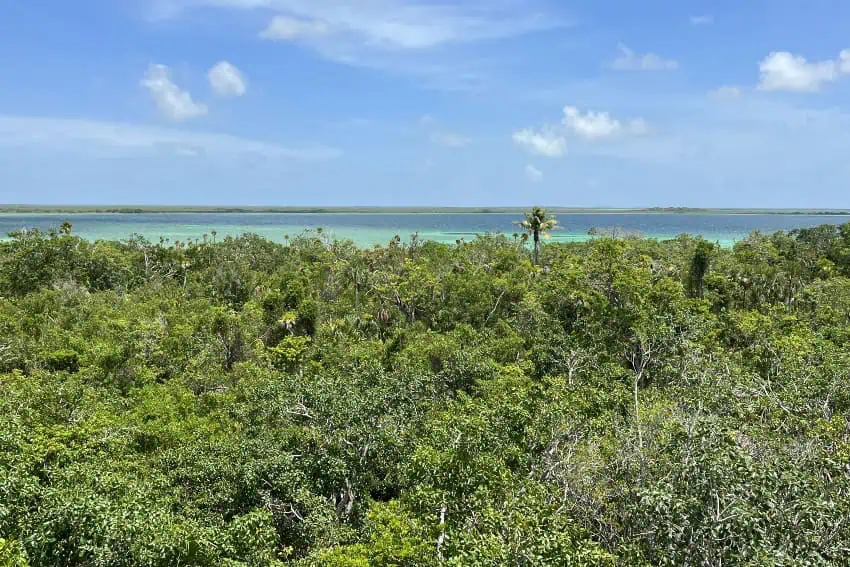
Just south of the vibrant energy of Tulum, the pace of life slows to the rhythm of the tides in Sian Ka’an, whose name aptly means “Origin of the Sky.” The 1.3-million-acre UNESCO World Heritage site is a vast network of turquoise lagoons, mangrove channels and wetlands. Despite its proximity to the hedonistic party scene of Tulum, it’s a completely different world here, one carved by Mother Nature and dominated by wildlife.
A boat trip through Sian Ka’an is the best way to explore the reserve. While gliding through the pristine waters with my family, our guide suddenly cut the engine as a pod of dolphins surfaced to play in our wake, their sleek bodies silhouetted against the emerald-green mangroves. We then drifted quietly, watching Morelet’s crocodiles sunning themselves on the banks like ancient, armored statues. The birdlife is staggering, with over 350 recorded species, including the shocking pink of roseate spoonbills. It’s a living mosaic of the Caribbean coast as it once was, a vital refuge for countless species.
There are two different ways of accessing Sian Ka’an. The easier route takes you through the lagoon side, as you enter through the Muyil ruins and hike through the boardwalk to get to the lagoon for a serene float down an ancient Mayan canal. The second way leads you to the coastal side of Sian Ka’an, via Punta Allen, for a longer boat trip that lets you experience marine life and coral reefs, with a chance of spotting dolphins, turtles and manatees. If you have the time, I highly recommend exploring both parts of Sian Ka’an to get a well-rounded experience.
Oaxacan Coast: For crocodiles, turtles and iguanas
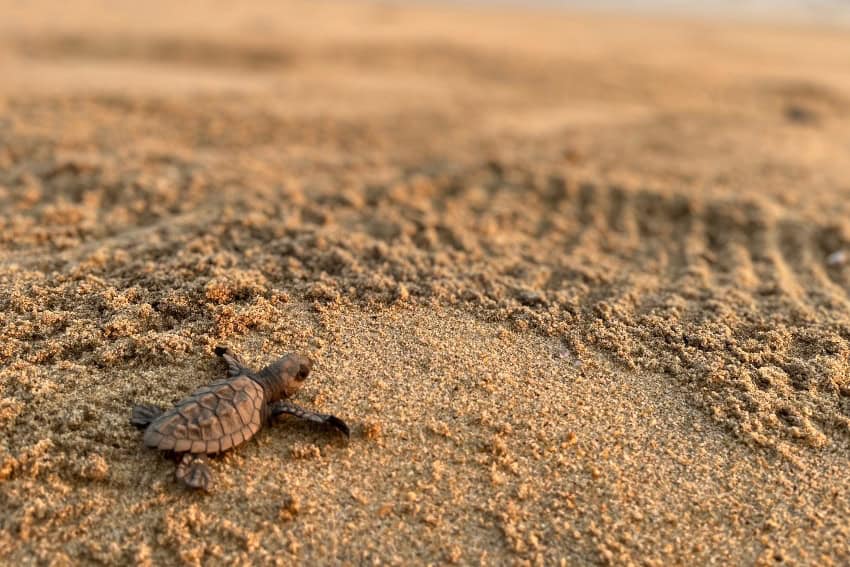
The Oaxacan coast is rightly famous for its world-class surf breaks and bohemian beach towns, amongst which the small village of La Ventanilla offers one of the most heartwarming ecotourism experiences in Mexico. Here, a cooperative of local families took it upon themselves to restore and protect their native mangrove ecosystem.
The experience begins as you board a lancha, and a guide from the community rows you through the serene, shaded waterways. Within minutes, the success of their conservation is all around you. Giant green iguanas perch on branches, countless species of water birds hunt in the shallows, and large American crocodiles glide silently through the water or bask on the muddy banks. Seeing these predators thriving, thanks directly to the efforts of the people who live alongside them, is a powerful lesson in grassroots ecotourism.
Combine your trip with a visit to the nearby National Turtle Center in Mazunte. For a truly special experience, join the turtle releases on Playa Bacocho near Puerto Escondido, run by VIVEMAR. You can help to release baby turtles at any time of the year, as various species of turtles lay eggs here (though there is a greater presence of turtles during the high season from October to April). Protecting over 27 km of the Oaxacan coast, this non-profit organization is one of the most outstanding conservation projects in Mexico.
Lacandón Jungle: For tapirs, monkeys and macaws
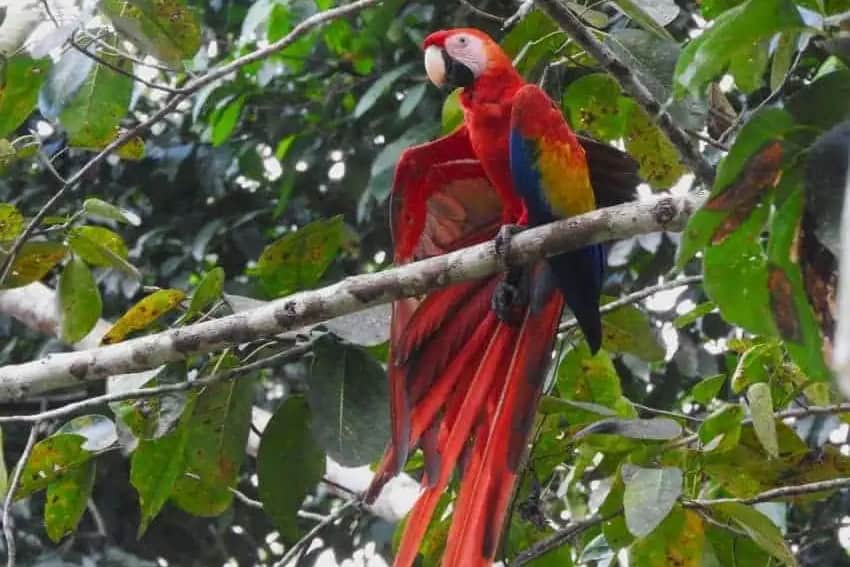
For the truly adventurous soul seeking a journey into Mexico at its most raw and untamed, there is nowhere else like the Lacandón Jungle. This patch of wilderness in Chiapas is the country’s largest remaining stretch of lowland rainforest and a vital biological corridor. Staying in an eco-lodge run by the Lacandón Maya people, the ancient guardians of this forest, is a deep cultural and ecological immersion.
On a boat trip down the magnificent Usumacinta River, which forms the border with Guatemala, I saw brilliant scarlet macaws flying in vibrant pairs and followed trails where the tracks of the elusive Baird’s tapir were still fresh in the mud. The air was thick and humid, alive with a symphony of insects, the calls of parrots and the ever-present monkeys. It was a challenging environment, but it rewarded me with a profound sense of connection to the wilderness.
A trip here requires planning and a willingness to go back to basics. Hire local Lacandon guides, whose ancestral knowledge of the forest’s flora, fauna and secret ruins is invaluable. There is no signal in the area, and you will be disconnected from the outside world. Pack for the heat and humidity, and be prepared for rain at any time of year.
What’s right for each type of traveler?
We’ve put together a table summarizing which destination would suit travelers based on their experience in Mexico.
Beginner Travelers are those with limited international experience, maybe this is their first trip to Mexico. Ideal for first-timers who prefer margaritas with training wheels. These travelers stick to well-trodden paths, mastering “¿Dónde está el baño?” while clutching a phrasebook. They thrive in destinations where guacamole arrives with optional spice and hotel staff speak “Google Translate.”
Intermediate Travelers are those with some international experience and can handle moderate language barriers and cultural differences. Ready to trade resorts for real-deal experiences, these travelers navigate cobblestone streets without face-planting. They’ve graduated to ordering tres tacos al pastor without pointing and can haggle for a sombrero in Oaxaca’s markets (but still overpay by 20%).
Advanced Travelers are those with extensive experience navigating complex destinations independently. These wanderers treat Mexico like a choose-your-own-adventure novel written in Spanglish. They’ve adopted a street dog named Churro, debate the merits of different mezcal artesanales, and know which mercado stall has the best tamales oaxaqueños.
![]()
Nellie Huang is a professional travel writer and author based in San Miguel de Allende with her family. She has contributed to BBC Travel, CNN, International Business Times, and National Geographic, and co-authored Lonely Planet’s 2025 Mexico guide. Read about her adventures worldwide on wildjunket.com and follow her updates on Instagram @wildjunket.
